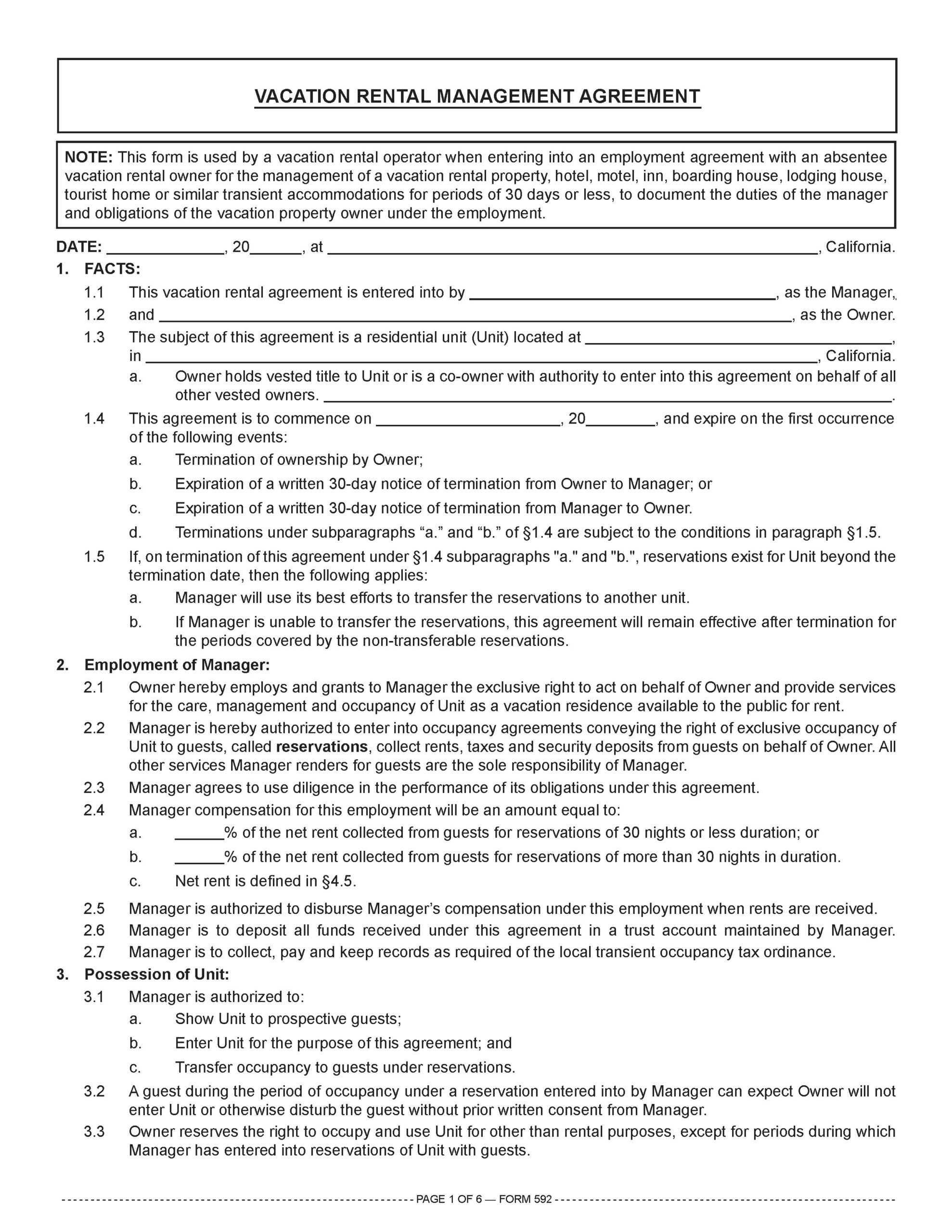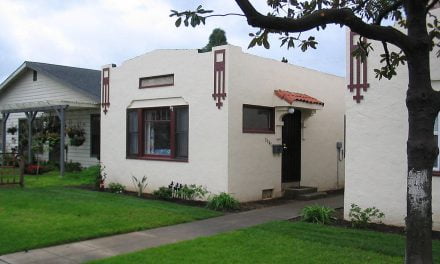Employees: distinct from tenants
A broker, retained to manage a residential income property as property manager, enters into an employment agreement with a resident manager. The resident manager will live on-site and oversee the daily management of the property. The employment agreement is called a resident manager agreement. [See RPI Form 591]
Under the resident manager agreement, the resident manager:
- acknowledges employment by the property manager;
- accepts the occupancy and use of an apartment unit rent-free or discounted, as part of or in full compensation for the employment; and
- agrees to vacate the property on termination of employment. [See RPI e-book Real Estate Property Management, Chapter 10]
Related video:
Resident manager activities
A resident manager is an individual employed by the property manager or landlord to live on-site at the managed complex and see to its daily operations. A resident manager’s duties may include:
- screening tenants and negotiating leases;
- cleaning vacated units;
- supervising landscaping, maintenance and repairs;
- serving notices; or
- attending to tenant inquiries.
Both residential income property and commercial property may have resident managers. However, apartment buildings with 16 or more units are required to have a landlord, resident manager or responsible caretaker living on the premises to manage the property. [25 Calif. Code of Regulations §42]
Resident managers do not need to be licensed as a real estate broker or agent to negotiate leases or collect rents. However, when a nonresident property manager is not the landlord, the nonresident property manager needs to be licensed by the Department of Real Estate (DRE) as a real estate broker. [Calif. Business and Professions Code §10131.01]
Hiring a resident manager
A property manager who employs a resident manager is responsible for the following brokerage activities:
- selecting and hiring the resident manager;
- maintaining worker’s compensation, liability insurance and any bonding requirements of the landlord or property manager;
- keeping payroll records, including information about withholding and employer contributions;
- supervising the resident manager; and
- terminating the resident manager’s employment.
The resident manager’s status as an employee is established in an employment agreement called the resident manager agreement. [See RPI Form 591]
Family members who live with the resident manager need to be listed in the resident manager agreement. Further, a statement noting these family members are not tenants, but family members of the employee, is to be included. Thus, the family members’ right to occupy the property terminates with the resident manager’s right to occupy the property (e.g., the termination of the resident manager’s employment).
References to the participants in the resident manager agreement need to identify the property manager/landlord as “employer” and the resident manager as “employee” [See RPI Form 591 §4.9]
Related article:
Termination of the resident manager
A resident manager agreement creates an at-will employment between the resident manager and the employing property manager or landlord. Thus, the resident manager’s employment may be terminated at any time and without prior notice.
While a landlord or property manager does not need to have a good reason to terminate a resident manager, they may not have an improper reason for terminating the resident manager. A property manager or landlord may not terminate the resident manager or otherwise harass them based on:
- disability;
- race;
- creed;
- color;
- gender;
- age; or
- other protected status.
An improper termination exposes the employing property manager or landlord to liability. [Stephens v. Coldwell Banker Commercial Group, Inc. (1988) 199 CA3d 1394]
Related article:
The resident manager agreement
An owner or property manager uses the Resident Manager Agreement published by Realty Publications, Inc. (RPI) when employing a resident manager to oversee the daily management of the owner’s rental property. The form allows the owner or property manager to document the resident manager’s non-discretionary administrative duties, hours of work and the manager’s occupancy of an apartment unit as part of their compensation. [See RPI Form 591]
The Resident Manager Agreement establishes:
- the retainer period for the resident manager;
- the resident manager’s duties;
- banking information;
- the resident manager’s compensation and hours worked; and
- the owner or property manager’s obligations. [See RPI Form 591]
Related article:
Transient occupancy is not a tenancy
Transient occupancy is the occupancy of a vacation property, hotel, motel, inn, boarding house, lodging house, tourist home or similar sleeping accommodation for a period of 30 days or less. This type of occupant is classified as a guest or a transient occupant.
A transient occupant/guest is not a tenant and has considerably different legal standing and obligations. Thus, a transient occupancy is not controlled by landlord/tenant law.
A guest occupies property known as lodging, an accommodation or a unit. In the context of transient occupancy, the property is never described as a space or premises. Further, the property is not called a rental property. The term “rental” implies a landlord/tenant relationship exists, which “lodging” does not as it is between a guest and owner of the property.
The guest’s occupancy of a property is labeled a stay, not possession or tenancy which is an exclusive right to occupy held by a tenant. During a guest’s stay in the lodging, the owner or manager of the property is entitled to enter the unit at check-out time even though the guest has not yet departed. In contrast, a landlord is not permitted to enter a tenant’s unit without proper written notice when the tenant has not yet vacated.
Related article:
Employing a manager of transient housing
A property manager who manages “vacation rental” accommodations needs to maintain detailed accounting records. This is the case whether the manager is employed by an owner of a:
- single family residence (SFR);
- unit in a common interest development (CID);
- unit in an apartment complex; or
- any other residence subject to a local transient occupancy tax.
Further, the property manager needs to send a monthly accounting statement to each owner they represent and make the records available for inspection and reproduction by the owner. They also need to comply with the local transient occupancy taxing agency regarding collection, payment and record keeping. [CC §1864]
A vacation rental operator uses the Vacation Rental Management Agreement published by RPI when entering into an employment agreement with an absentee vacation rental owner for the management of a vacation rental property. The form allows the vacation rental operator to document the duties of the manager and obligations of the vacation property owner under the employment. [See RPI Form 592]
The Vacation Rental Management Agreement establishes:
- the commencement and expiration dates of the agreement;
- the manager’s duties, obligations and services;
- the owner’s duty to maintain the unit; and
- rents and security deposits. [See RPI Form 592]
The manager of a transient occupancy property is exempt from being licensed as a real estate broker. [Calif. Bus & P C §10131.01(a)]
Related article:
Want to learn more about resident managers? Click the image below to download the RPI book cited in this article.






















